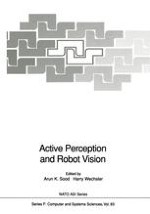1992 | OriginalPaper | Chapter
Efficient Representation and High-Compression Coding of Image Sequences
Authors : Todd R. Reed, Touradj Ebrahimi, Patrice Willemin, Ferran Marques, Murat Kunt, Gaetano Giunta, T. George Campbell
Published in: Active Perception and Robot Vision
Publisher: Springer Berlin Heidelberg
Included in: Professional Book Archive
Activate our intelligent search to find suitable subject content or patents.
Select sections of text to find matching patents with Artificial Intelligence. powered by
Select sections of text to find additional relevant content using AI-assisted search. powered by
Because of the large amount of data represented by an image sequence of even modest resolution, the transmission and storage of these sequences often requires compression ratios exceeding 200:1. Such ratios are near the limits of conventional coding methods. To exceed these limits, we seek to use knowledge of the human visual system, and to code sequences such that only perceptually important information is retained. For still images, techniques of this type have become known as “second generation” coding methods. Five approaches to this problem are described in this paper: 3-D split-and-merge, edge- based coding, Gibbs-Markov random fields, the Gabor decomposition, and transformed QMF filters.Index terms: Image sequence coding, second generation, split-and-merge, edge detection, Gibbs distribution, Gabor decomposition, QMF filters.
